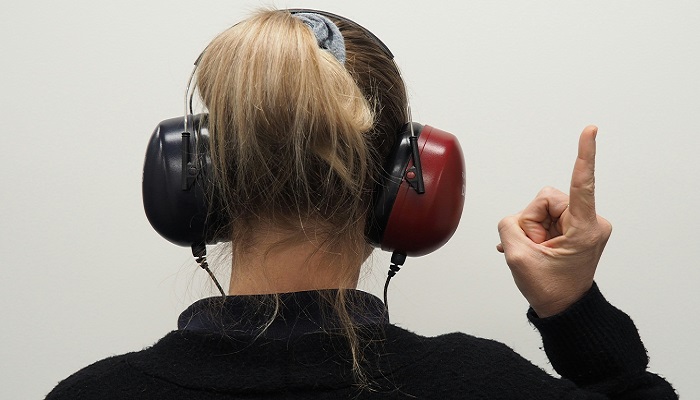In an age of digital innovation and connectivity, telehealth advancements have transformed the healthcare delivery landscape, bringing convenience, accessibility, and efficiency no matter where patients live.
Teleaudiology, a branch of telehealth focused on providing audiological services remotely, has emerged as a promising solution to address the growing demand for hearing care.
This article explores its applications, benefits, challenges, and potential to revolutionize hearing healthcare delivery.
Applications of Teleaudiology
Teleaudiology encompasses a diverse array of applications, ranging from diagnostic assessments to rehabilitative interventions, all delivered to you remotely through telecommunication technologies. Comprehending the breadth of these applications sheds light on the versatility and effectiveness of teleaudiology in addressing patient’s audiological needs.
Diagnostic evaluations
Teleaudiology enables audiologists to conduct remote diagnostic evaluations using specialized equipment and telecommunication software, including otoscopy, audiometry, tympanometry, and speech audiometry. These assessments allow for the timely diagnosis and detection of hearing loss and other auditory issues, regardless of location.
Hearing screening programs
Teleaudiology enables the implementation of hearing screening programs on a large scale, reaching you whether you are in remote or underserved areas and may not have access to traditional healthcare facilities. Using telecommunication platforms and self-administered tests enables audiologists to screen you for hearing loss and identify if you need further evaluation or intervention.
Hearing aid fittings and adjustments
Remote hearing aid fittings and adjustments have become possible through teleaudiology platforms equipped with remote programming capabilities. Audiologists can remotely program, fine-tune, and troubleshoot hearing aids, ensuring optimal performance and personalized fitting for you without requiring you to travel far distances for in-person visits.
Counseling and rehabilitation
Teleaudiology facilitates remote counseling and rehabilitation sessions for individuals with hearing loss and their families. Through video conferencing and telecommunication tools, audiologists can provide counseling on hearing loss management, communication strategies, and assistive devices, empowering you to navigate your hearing journey effectively.
Follow-up care and monitoring
Remote follow-up care and monitoring allow audiologists to track progress, assess treatment outcomes, and remotely address concerns or issues. Teleaudiology platforms enable ongoing communication between audiologists and patients, ensuring continuity of care and timely intervention when needed.
Furthermore, online resources like audiologists.org offer informative content that guide patients through the maze of options, from finding the right audiologist to understanding the latest in hearing aid technology.
Benefits of Teleaudiology
Teleaudiology offers a multitude of benefits to both patients and healthcare providers, revolutionizing the delivery of audiological care and enhancing accessibility, efficiency, and patient satisfaction. These benefits underscore the transformative potential of teleaudiology in addressing the diverse needs of people with hearing loss and other auditory conditions.
Accessibility and convenience
Teleaudiology eliminates geographical barriers and provides access to hearing care services for individuals residing in remote or underserved areas. You can receive high-quality care from the safety and comfort of your home, reducing your need to travel and minimizing disruptions to your daily life.
Timely intervention and early detection
Remote diagnostic evaluations enable audiologists to identify hearing loss and other auditory disorders early, facilitating timely intervention and preventive measures. Early detection allows for prompt initiation of treatment, potentially minimizing the progression of hearing loss and improving treatment outcomes.
Cost-effectiveness
Teleaudiology reduces healthcare costs associated with travel, transportation, and in-person visits, benefiting you and healthcare providers. Remote consultations and follow-up appointments require fewer resources and overhead expenses, making hearing care more affordable and accessible to a broader population.
Convenience and flexibility
Teleaudiology can offer you unparalleled convenience and flexibility, enabling you to schedule appointments at your convenience and receive care without disrupting your daily routine. Remote consultations and follow-up appointments can be conducted at flexible times, accommodating your busy schedules and reducing wait times.
Patient engagement and empowerment
Teleaudiology promotes patient engagement and empowerment by involving individuals in their care journey. Through remote counseling, education, and self-management tools, patients better understand hearing health and become active participants in decision-making and treatment planning.
Enhanced continuity of care
Teleaudiology facilitates seamless communication and coordination of care between patients and audiologists to ensure continuity of care across different settings and providers. Remote follow-up appointments and monitoring enable audiologists to track their progress, assess treatment outcomes, and promptly address any concerns or issues, improving patient satisfaction and outcomes.

Challenges and Considerations
While teleaudiology offers numerous benefits and opportunities for improving audiological care delivery, it also presents challenges and considerations that require addressing to maximize its effectiveness and impact. Acknowledging and addressing these challenges is critical for ensuring the successful implementation and sustainability of teleaudiology programs.
Technological barriers
Access to hardware devices, reliable internet connectivity, and digital literacy may pose challenges for patients who reside in rural or low-resource settings. Ensuring equitable access to teleaudiology services and addressing technological barriers are essential to maximizing reach and impact.
Regulatory and reimbursement issues
Regulatory frameworks and reimbursement policies vary across regions, affecting the implementation and sustainability of teleaudiology programs. Clear guidelines, licensure requirements, and reimbursement mechanisms are vital to support the integration of teleaudiology into mainstream healthcare delivery models.
Privacy and security concerns
Teleaudiology platforms must adhere to strict privacy and security standards to protect sensitive health information. Compliance with data protection regulations, encryption protocols, and secure communication channels is crucial for maintaining patient confidentiality and trust.
Clinical considerations and diagnostic accuracy
Remote assessments conducted through teleaudiology platforms may present challenges in ensuring diagnostic accuracy and reliability compared to traditional in-person evaluations. Factors such as ambient noise, equipment calibration, and patient cooperation can impact the validity and consistency of your test results.
Audiologists must consider these clinical considerations and implement quality assurance measures to ensure remote assessments’ accuracy and reliability, including appropriate staff training, standardized protocols, and regular equipment maintenance and calibration.
Patient engagement and communication
Establishing effective communication and rapport with patients in a remote setting can be challenging, particularly for individuals with hearing loss or communication difficulties. Audiologists must employ strategies to enhance patient engagement, active participation, and understanding during teleaudiology consultations, including clear communication, visual aids, and interactive tools.
Providing support and accommodations for patients with diverse communication needs, such as sign language interpretation or captioning services, can improve accessibility and facilitate effective communication in teleaudiology encounters.
Ethical considerations and informed consent
Teleaudiology raises ethical considerations related to informed consent, patient autonomy, and the ethical use of technology in healthcare delivery. Audiologists must ensure that patients fully understand the nature of teleaudiology services, including the benefits, risks, and limitations, and provide informed consent before participating in remote assessments or interventions.
Future Directions and Innovations
The field of teleaudiology sets itself up for innovation and continued growth, driven by advancements in technology, evolving healthcare delivery models, and the increasing demand for accessible and efficient audiological care. Several key future directions and innovations promise to further expand the scope and impact of teleaudiology in improving hearing healthcare delivery.
Integration of Artificial Intelligence (AI)
The integration of AI algorithms and machine learning techniques into teleaudiology platforms holds promise for enhancing diagnostic accuracy, personalizing treatment recommendations, and optimizing patient outcomes.
AI-driven tools for automated audiometry, speech recognition, and predictive analytics can augment audiologists’ capabilities and improve remote assessments’ efficiency.
Wearable and IoT devices
Internet of Things (IoT) technologies and wearable devices offer opportunities for remote monitoring of hearing health and real-time data collection. Smart hearing aids, wearable sensors, and connected devices enable continuous tracking of auditory functions, allowing for early detection of changes in hearing status and proactive intervention.
Virtual Reality (VR) and Augmented Reality (AR)
Virtual and augmented reality technologies have massive potential to revolutionize teleaudiology by creating immersive and interactive experiences for patients and audiologists.
Virtual simulations, augmented reality environments, and telepresence solutions can enhance the delivery of remote diagnostics, counseling, and rehabilitation, providing you with a more engaging and personalized approach to hearing care.
Policy and regulatory frameworks
Policy and regulatory frameworks are pivotal in adopting and implementing teleaudiology services. Future efforts should focus on advocating for supportive policies, reimbursement mechanisms, and licensure requirements that recognize and accommodate teleaudiology practice.
Collaboration with policymakers, professional organizations, and advocacy groups can help influence healthcare policies and regulations to promote the widespread adoption and integration of teleaudiology into mainstream audiological practice.
Teleaudiology Is the Future of Hearing Care
Teleaudiology can potentially improve patient outcomes, expand access to high-quality hearing care, and promote a patient-centered approach to audiological services through telecommunication technology.
As teleaudiology continues to evolve and innovate, it promises to revolutionize how people perceive, diagnose, and manage hearing health, ushering in a new era of accessible, convenient, and personalized care for individuals with auditory disorders.


















